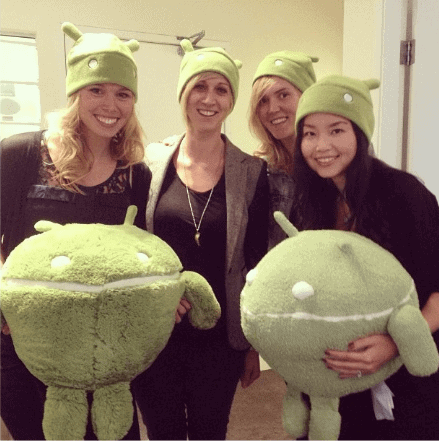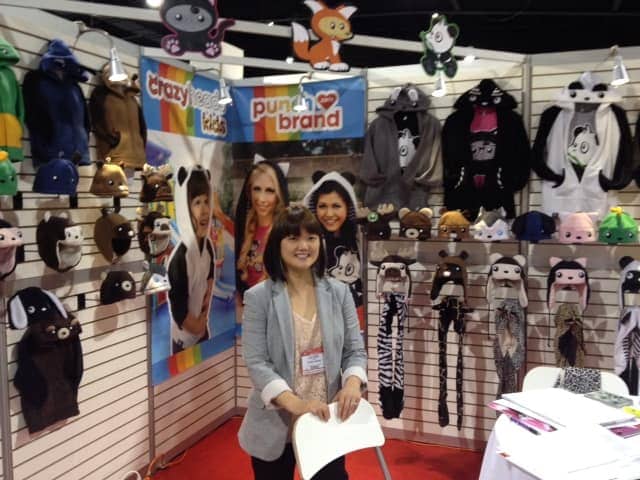
The power of niching: How I got Google as a client
Do you want to learn how to target your best customers without coming across as salesy and pushy?
Do you need clarity around what specific product best represents what you actually do or sell?
Are you conflicted about which product to focus on that you’ve actually built two separate businesses, complete with multiple business cards, and even multiple websites?
Well, then you’ve come to the right place. In this informative and action-packed article, you will learn:
- What is niching and Why you’re insane if you don’t niche
- Some myths on niching and why niche-phobia is a common problem of start-ups
- How to pick your niche
I’m Glynis, a clothing brand owner turned business coach with 20 years apparel industry experience. Before launching my coaching practice, I ran a clothing design company called Punch Brand. I started my business in 2005 as a hobby while I was working full time as a Product Manager for Reebok Canada. That hobby eventually turned into a full-time business for me that led to creating and selling my products globally. At one point, I caught the attention of the Google campus merchandise buyer and we collaborated on several official Android apparel and accessories for the Google merchandise store. I ran Punch Brand for an amazing 10 years!
Who’s your ideal customer? You know that saying, “If you’re everything to everyone, then you’re nothing to no one”. Knowing who you help and how you help them is a big part of an effective marketing strategy. I personally find it so frustrating when clients cannot choose what business they’re in. Many business owners with a product they don’t consider to be niche, resist the idea of narrowing the focus of their marketing, fearing that they will lose business. However, choosing a niche and targeting it can actually increase sales. Here’s how it worked for my business.
I started out creating character inspired headwear for anime fans. Pretty niche right? I was predominantly selling my products at anime and comic conventions, because that’s where my customers hang out. Everything I created was designed for this one specific customer. And guess what? That’s how Google found me. They were looking for someone to design and produce Android mascot hoodies and beanies for them. I guess I showed up on the search engine… they are Google after all.
Niching also helps with becoming known as the expert in your field. When your business is niched very finely and you’re always talking about and writing about the same pain point, you become regarded as an expert. Tired of competing on price? Niching is the best way to command a higher price point. Once you’re perceived to be the only person for that specific job, nobody will blink at or haggle about your prices ever again. Niching brings higher quality clients. When you increase the quality of what you offer in terms of value, the clients you attract will be of the same quality. It’s the law of attraction. Like attracts like.
If your strengths and passion lie in knitwear, then do that.
If your intent is to educate and lessen the impact of fast-fashion on the environment, then focus on sustainable design.
If you love cosplay and Japanese pop culture, then start a brand that’s entirely devoted to fans of anime and cosplay. That’s what I did!
To help demonstrate the importance of picking just one type of Client and one thing you sell, I’ve broken it down into 4 different examples:
- The Generalist
- The Product Specialist
- The Client Specialist
- The Perfectly Niched
So what is a niche exactly? I’ll demonstrate these models using clothing brands:
The Generalist: The GAP
The GAP’s client type are men, women, children, babies, Anyone, and everyone. They sell casual and work apparel, denim, fleece and even yoga and workout wear and whatever trend they jump on. And what kind of pricing does the GAP have? It’s pretty affordable, it’s for everyone. They always have a discount rack with markdowns for those discount shoppers. It’s pretty middle of the road, certainly not a place you would shop for something that’s good quality or unique. This business caters to every client type and features everything to sell. It’s not niched at all that’s why I call them the generalist.
The Product Specialist: Lululemon
Lululemon caters to every type of client type from men, women, teens, people who want to appear fashionable. What’s different about them is their focus on the “thing they sell” and that’s all about Yoga. Because Lululemon was essentially the first to bring yoga clothing to the mainstream market they can charge a premium for their brand name but because they cater to every client type, they’re still not as narrowly niched as other businesses. This is the product specialist type of business model.
The Client Specialist: Mr. Big & Tall
In this business model which I’ve called the Client Specialist, things are flipped from the Lululemon model. Mr. Big & Tall only has 1 client type, tall men but things they sell are varied. You should be getting an idea of where this niching model is going.
The Perfectly Niched
The last and ideal model of business niching is demonstrated by the fourth clothing brand type and that’s my brand crazyheads. We create animal-inspired apparel for fans of anime and Japanese pop culture. When we started out we were able to command a pretty high price point because we were the only ones producing this type of product for this market. The competition was relatively low and we could sell upwards of 100 hoodies at 1 weekend show at a $65 price point, not to mention several hundred hats at $25 each. Our customers loved our products and would come and hang out with us at the shows.
Still on the fence about whether to niche your business? Even if you could move from a generalist to any kind of specialist, you’ll be better off than you are now.
So, how do you pick? Let me take you through the process of picking your niche.
Step 1: Make a list of all the client types you’d like to work with.
Step 2: Make a list of all the different things that you sell
Step 3: Match up each client type and the thing you sell, then give yourself a score out of 1 to 10, being the most desirable for you. Rate them based on the following criteria:
- Fit for you, your personal preference, skill set, experience, and background
- Fit for the income you want- how many of this group x how much you would charge per person
- Access- your ability to reach your target and how accessible they are to you in large numbers
- Add up the scores for each client/ product combo
- Which has the highest score?
CONGRATS! You found your niche!
In conclusion, niching helps you get very clear on your marketing message. When you serve two target markets, whose trade show do you invest your very limited marketing funds to? As a small business owner time and money are your most valuable resources. There simply aren’t enough hours in the day, or money in the bank for any business to be able to afford to have a multitude of products, services as well as target markets to wow. Picking one or two just makes economic sense.
Do you have niche phobia? Please share in the comments section below.

